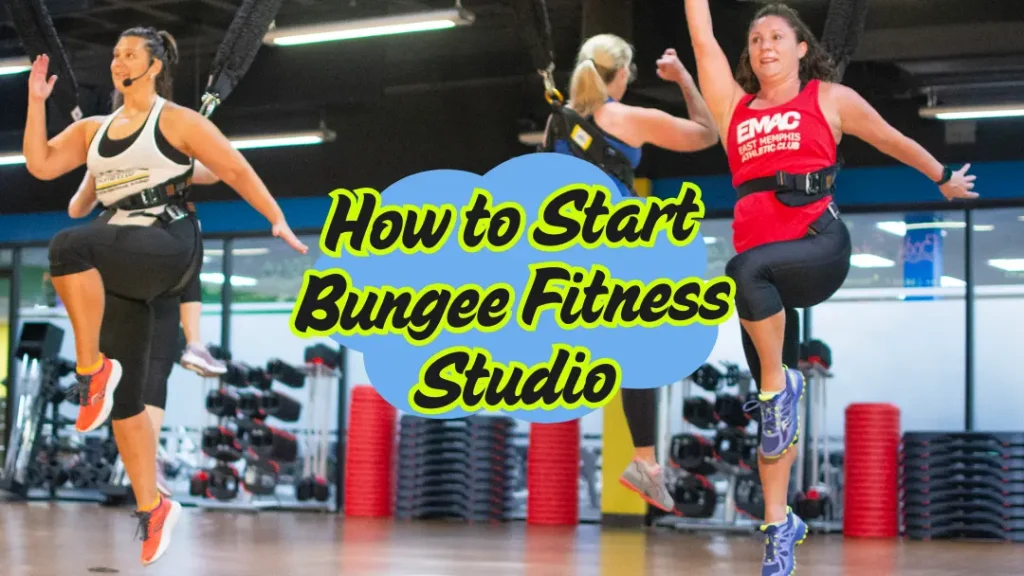How to Start a Bungee Fitness Studio: Equipment, Cost & Setup

Bungee fitness is one of the fastest-growing trends in boutique wellness. It’s a low-impact high-impact workout feels like dancing with wings. Combining the fun of flight with effective low-impact exercise, it appeals to clients of all ages looking for something new. But how do you actually turn this innovative concept into a successful business?
Why Start a Bungee Fitness Studio?
The fitness industry is shifting toward experiential, boutique workouts. Bungee fitness classes stand out with their dynamic, Instagrammable moves while being joint-friendly, a big selling point for adults wary of high-impact exercise.
Demand for bungee fitness studios searches is growing as more people hear about this unique workout. That makes it a timely, compelling niche for entrepreneurs ready to deliver something special.
How to Start Bungee Fitness Business
If you’re amazed by the popularity and fun offered by this amazing dancing fitness, here’s a complete, no-nonsense guide on how to start a bungee fitness studio, from costs and equipment to certification and marketing.
Research the Local Market
Start with competitive analysis. Use tools like Google Trends or simple searches for bungee fitness near me in your city to see what already exists.
Ask yourself:
- Are there competitors nearby?
- Are they thriving or leaving gaps in pricing, quality, or scheduling?
- Is there demand from younger adults, older adults, or specialized groups like postpartum women or rehab patients?
Your research will shape everything from class offerings to marketing strategy.
How Much Does It Cost to Start a Bungee Fitness Business?
Startup costs vary widely. On average, plan for $20,000–$100,000 depending on location size, equipment quality, and design.
Key expenses include:
- Lease or rent for high-ceiling space.
- Professional-grade bungee fitness equipment and rigging.
- Instructor salaries and certification.
- Insurance (critical for liability).
- Marketing and branding.
- Interior renovations (mirrors, flooring, sound system).
Building a detailed business plan with clear cost estimates will also help you secure funding or attract investors.
Choosing the Right Location
Space is crucial. A successful bungee studio usually requires:
- Ceilings at least 12–15 feet high for safe rigging.
- Reinforced structure for mounts.
- Open layout for group classes.
- Good ventilation and lighting.
Also consider easy parking, public transit access, and proximity to gyms, yoga studios, or shopping centers to drive walk-in traffic.
Essential Bungee Fitness Equipment
High-quality bungee fitness gear ensures client safety and long-term reliability. Your bungee fitness set up should include:
- Certified, adjustable bungee cords for various body weights.
- Comfortable, secure harnesses in multiple sizes.
- Rigging systems (ceiling mounts or frames) that meet safety standards.
- Padded, non-slip flooring.
- Mirrors, storage, speakers for music-driven classes.
Skimping on equipment can lead to injuries and poor reviews. Invest wisely.
Bungee Fitness Certification
Clients want to know they’re in good hands. Investing in bungee fitness certification for yourself and staff isn’t just smart, it’s often required for insurance.
Certification programs cover:
- Rigging safety and maintenance.
- Class choreography and teaching methods.
- Injury prevention and client management.
Studio Business including expenses,
A certified team boosts your credibility and makes marketing easier.
Staffing Your Bungee Studio
Your instructors are your biggest asset. In addition to being certified, they should be energetic, motivational, and able to create a fun, welcoming atmosphere.
Consider hiring:
- Front-desk staff for bookings and inquiries
- Social media/marketing specialists
- Cleaning staff to maintain hygiene
A well-trained team creates an experience people rave about online.
Marketing Your Studio
Marketing is essential. Start with a clean, professional website optimized for local SEO. Include key terms like bungee fitness near me, how to start a bungee gym, and your city name.
Use high-quality photos and videos of classes to show how fun and safe it is. Share client testimonials and success stories.
Promote through:
- Social media ads (Instagram, Facebook)
- Google Ads for local search terms
- Partnerships with local wellness businesses
- Free trial classes or launch events
Considering a Bungee Fitness Franchise
Big names in fitness like Bungee Fitness in USA and Australia offers the franchise opportunity. If you want less risk, consider buying a bungee fitness franchise. Franchises provide:
- Pre-approved equipment packages.
- Rigging design support.
- Instructor training and certification.
- Branding and marketing resources.
- Client’s trust with the brand name.
Though upfront fees and royalties are higher, you benefit from proven systems of big brands and support.
How to Set Up Bungee Fitness at Home vs. in a Studio
You’ll see guides on how to set up bungee fitness at home, but studio setup is far more advanced.
At home:
- Door anchors or simple ceiling hooks.
- Limited space and weight capacity.
- Often single-user setups.
In a studio:
- Professionally installed, load-tested rigging systems.
- Enough space for multiple participants to move freely.
- Compliance with local building codes and safety standards.
Hire professional riggers or engineers to design and certify your setup. This investment ensures customer safety and protects your business legally.
Final Tips for Success
- Prioritize safety and regular equipment checks.
- Offer beginner-friendly classes with clear instructions.
- Create tiered pricing (drop-in, packages, memberships).
- Build a community through workshops and events.
- Listen to customer feedback and adapt.
Learning how to start a bungee fitness studio is more than buying equipment, it’s about creating an unforgettable, safe experience people want to share. With smart planning, quality gear, professional training, and creative marketing, you can build a successful studio that stands out in today’s fitness landscape.
